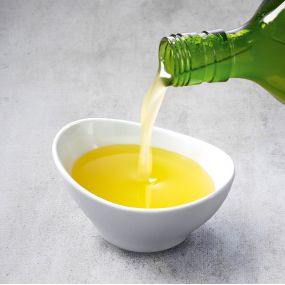Matcha first appeared over 800 years ago as a meditation drink for Buddhist monks. Buddhist monks discovered matcha over 800 years ago during their travels in China. Upon their return to Japan, they brought back tea plants and began cultivating them. Even back then, matcha was a highly prized drink, reserved for the social elite.
Buddhist monks enjoyed this drink during their long meditation sessions.
Samurai, on the other hand, drank a cup of matcha before their battles, as it made them stronger and gave them lasting energy and concentration.
Traditionally, matcha is always drunk as part of a tea ceremony, and this ritual is still practiced today.
The three most important characteristics of good matcha:
• COLOR Each grade of matcha has its own color. During the shading phase, the tea plants produce more chlorophyll and amino acids. These give the leaves their intense green color, which remains visible even after grinding. The more intense the green, the higher the quality of the matcha.
• TASTE The higher chlorophyll and amino acid content gives the tea leaves their nutty taste and sweetness (umami). The bitter substances in normal tea are necessary to protect the leaves from the sun. Shaded tea contains less of these substances.
• TEXTURE Before Tencha leaves are ground into Matcha, the veins and stems are removed, leaving only the finest and purest pulp of the young tea leaves for grinding. High-quality Matcha powder has an ultra-fine texture that can also be verified by touch using a streak test.
HOW TO RECOGNIZE REAL MATCHA
The streak test can be used to determine whether Matcha is authentic or fake: only a straight, velvety line can be drawn with the thumb on authentic Matcha.
Lower grades, which are industrially processed, produce a sandy, broken line when the streak test is performed.
• Rich, deep emerald green color
• Intense, fresh aroma reminiscent of green tea
• Pronounced umami flavor, Japanese sweetness
When you drink matcha, you consume the entire tea leaf and thus enjoy 100% of its ingredients. Matcha tea is considered the natural superfood due to the large amount of valuable ingredients it contains, such as numerous vitamins, minerals, the amino acid L-theanine, and many antioxidants such as epigallocatechin gallate.
Matcha is packed with benefits: it reduces stress, detoxifies, strengthens the immune system and brain function, boosts energy levels and promotes cell regeneration.
Our Kotobuki Organic Premium Ceremonial Matcha Tea is made from tencha sourced mainly from Kagoshima and stone-ground in Nishio, Aichi Prefecture. This tea has been shaded for 3 to 4 weeks. This organic Kotobuki matcha tea of ceremonial quality is recommended to be enjoyed on its own. It has a slightly spicy and very mild taste. In addition to being enjoyed on its own, this powder can also be used as a high-quality ingredient in desserts, chocolate, and ice cream, or in cosmetics and dietary supplements.
Preparation tips:
• Sift the matcha
• add a little hot water (max. 80°C)
• whisk the matcha with a bamboo whisk until it has a foamy consistency
• enjoy
For a good matcha latte, mix 1 tablespoon (10 g) of matcha with 200 ml of hot milk, add the milk foam and serve.
































